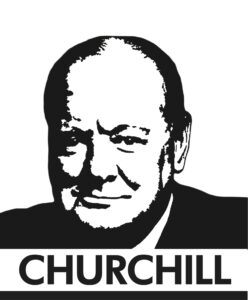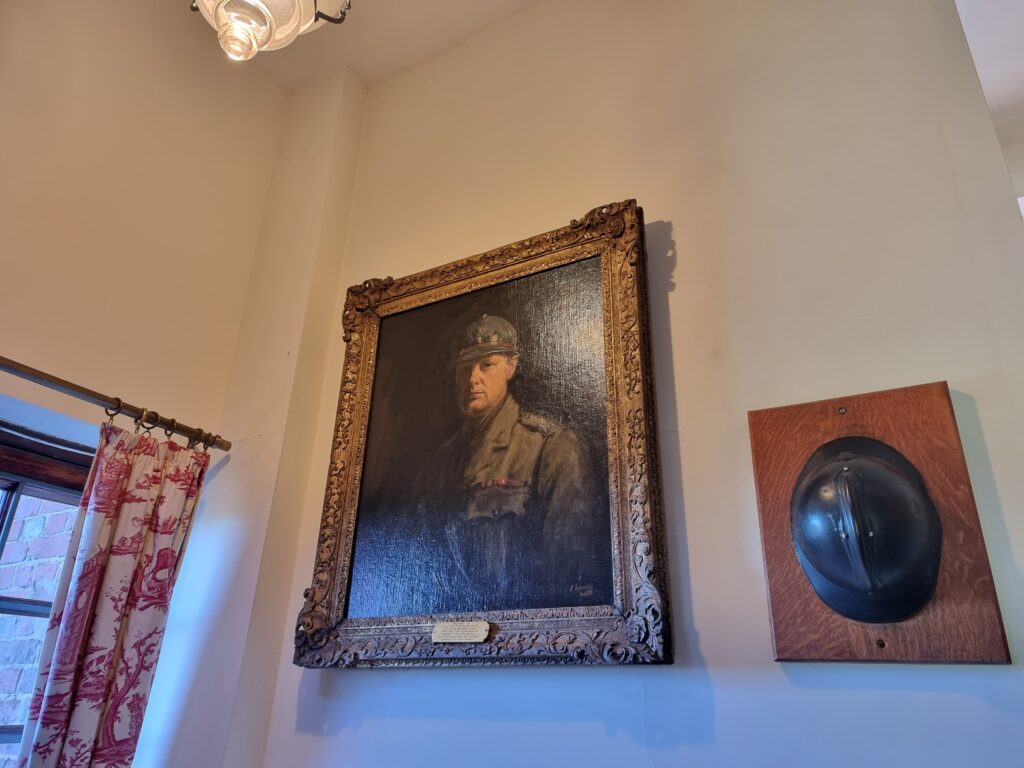
Finest Hour 197
The Lavery Portrait

March 31, 2024
Finest Hour 197, Third Quarter 2022
Page 50
By Katherine Carter
Katherine Carter is Property Curator at Chartwell.
Winston Churchill (1874–1965) wearing a French Poilu’s Steel Helmet • Sir John Lavery (1856– 1941) • 1916 • Oil on Canvas • 76 x 69 cm • NT 1102452 • Transferred by HM Treasury, 1984 • National Trust Collections • Chartwell, Kent, UK
This striking portrait of Churchill was painted in 1916 by Irish artist Sir John Lavery. It depicts Churchill as Lieutenant-Colonel of the 6th Battalion Royal Scots Fusiliers, which he commanded on the Western Front during the First World War in the early months of 1916. The portrait includes the unusual addition of a French infantryman’s helmet, known as a Casque Adrian, which Churchill wore in the trenches, believing it would protect his “valuable cranium.” He reveled in the fact that it looked “Cromwellian.” To this day, the very helmet Churchill wore for this portrait and in battle hangs alongside the painting on the main stairs at Chartwell.
The inscription on the painting’s frame reveals that it was commissioned by the officers of the Armoured Cars Squadrons, in gratitude for Churchill’s encouragement. While the unit did owe its existence largely to Churchill’s fascination with new military technology, the idea of the gift should in fact be credited to one man, Oliver Locker-Lampson (1880–1954).

2025 International Churchill Conference
Prior to the outbreak of war, Locker-Lampson had been the Conservative MP for North Huntingdonshire. He and Churchill first met in 1911 and became good friends, with Locker-Lampson’s name appearing frequently in Chartwell’s Visitors Book over the years. When war broke out in 1914, Locker-Lampson joined the Royal Navy Volunteer Reserve, having been vouched for by Churchill. When the armoured car squadrons were established, Locker-Lampson commanded Number 15 squadron in northern France near Dunkirk. It was around this time that he wrote to Churchill saying that he had recently seen a painting by Lavery of armoured cars from the RNAS Armoured Car Division that was for sale in London and immediately thought of “getting the officers of the armoured car squadrons to club together and buy it for you.” To Locker-Lampson’s annoyance, however, he discovered the painting had quickly sold. Instead, he decided to commission this portrait of Churchill.
The portrait remains one of the most striking ever done of Churchill and depicts him using Lavery’s hallmark technique of a dark surround with a brightly lit central figure. It became one of a pair of companion portraits with a similar technique executed by Lavery to paint Churchill’s wife Clementine in the same year, the original of which Churchill held so dear that he hung it in the inner sanctum that was his study at Chartwell.
Subscribe
WANT MORE?
Get the Churchill Bulletin delivered to your inbox once a month.





